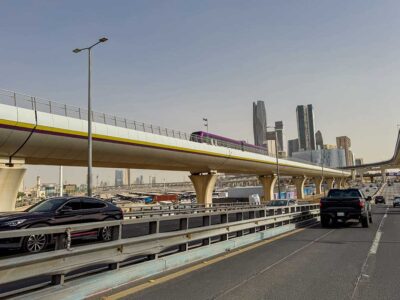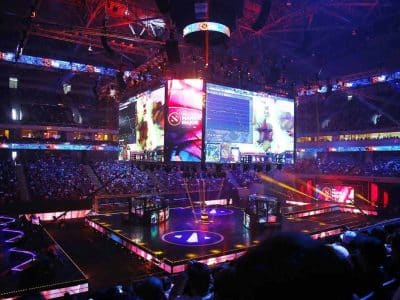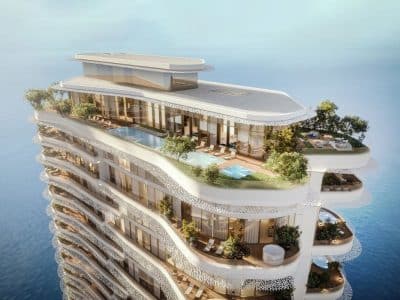One does not have to look far for evidence of the popularity
of glass in the GCC. Be it Manama, Doha, Riyadh, Abu Dhabi or Dubai,
weird and wonderful glass towers permeate the city skyline, shining – baking, even
– in the hot summer sun.
Not that the Middle East is
alone in its love of the shiny stuff. Across the US,
Europe and China,
architects have been knocking up glass towers since the very earliest days of high-rise
construction. It is just that, in most of these markets, temperatures do not reach
50°C for weeks on end, turning tall towers into greenhouses.
Given this trend, it is little surprise that new regulations
published last year by the Department of Municipal Affairs in Abu Dhabi came as such a shock to the industry.
The emirate decreed that, in the future, designers will be encouraged – perhaps
even compelled – to cover only 30% of the façade of new buildings in glass, or the
option to limit solar gain to 30% of the design.
“I think it is going to change the whole look and feel of the
city,” said Nathan Hones, GM of Abu Dhabi-based architectural firm Stride Treglown.
“You are almost heading back towards the JBR [Jumeirah Beach Residence in Dubai] type of building massing.”
Hones said that, while the regulation will undoubtedly make things difficult for
designers and developers, the crackdown on glass was somewhat inevitable. There
are ways of limiting the impact of heat gain on the glass, using low ‘U-value’ glass,
but at the end of the day, limiting glass itself has a massive impact on sustainability.
“You can understand why they have made this decision, in terms of trying to stop
the heat before it gets into the building. Sure, you can do that by using low U-value
glass, but there is nothing like soaking it up with a solid mass,” he said.
But the question remains how far Abu Dhabi will go to enforce the new regulations,
said Paul Haslam, business development manager at façade consultant Multiforms.
Certainly in other markets in the GCC, glass towers are going up left, right and
centre.
“I can show you two towers in Riyadh that we have worked on that do not have
a single solid panel on them. It is completely glazed. So it depends where you are
in the world,” he said. That said, there has been a drive in the façade industry
towards more sustainable usage of glass, and just because a tower appears to be
solid glazed, it does not mean it is one big greenhouse.
“The vogue now is to add in solid features, either in precast
or glass reinforced concrete (GRC), so they have strips of GRC behind the glass.
Is it 30%? Probably not. But it is definitely moving somewhere,” said Haslam. “The
changes in glass now relate to what you can do to improve the performance of the
glass, if you are over your percentage. And glass is improving in terms of the coatings,
technology, etc.” he added.
“The key is price. As a façade specialist in the current market,
coming in with an expensive bid at the tendering process, however sustainable the
glass may be, is suicide. Even firms such as Foster & Partners can only get
away with building highly sustainable projects because they have understanding clients.
A one-off, small developer in Saudi
Arabia is unlikely to want to pay a premium either
for a solid façade, or for high-quality sustainable glass.”
This is a point which Schott Middle East MD Kiomars Dabbagh concurs
with. Schott has developed glass that is capable of absorbing solar energy, known
as building integrated photovoltaic (BIPV) glass, but the premium is such that while
interest is high, uptake is slow; in fact, it is almost non-existent. “The downside,
of course, is cost. While we have had a lot of enquiries, to date we have not executed
any projects.” Dabbagh said that when he arrived in the UAE from Canada, he was surprised
to find so much glazing in such an extreme climate. At the end of the day, the regulations
are necessary, and will serve to drive the industry to come up with new products.
“We owe it to ourselves to be careful about how we build. We
have got to take responsibility. The large-scale use of glass in the construction
industry in areas of extreme climate can lead to problems that we have to live with,”
he said. “It is good to shake up people in the industry, to create awareness and
to say you need to be more responsible in terms of the design itself.
“It also forces the industry to be more creative, as opposed
to just copying what was popular somewhere else.” The move towards sustainability
in the construction industry is not likely to sound the death knell for iconic buildings
in the region, according to VE Solutions director of development Eugene Siterman.
“We are of the opinion that the glass tower in the desert, and
iconic buildings in general, will always be there, as these bring character to a
region and a city.
“The point is not to avoid glass totally so as to reduce energy
consumption, but to respond to the engineering challenges posed, by working with
the architects and developers to create materials and high-efficiency systems to
overcome the potential negative impacts.
“That is how a lot of technology evolves, through human desire
to go beyond and achieve something more,” says Siterman.
In the emirate of Dubai, meanwhile,
a federal green building code that will limit glass to 60% on external façades of
Dubai’s structures will be implemented in 2014, according
to the Dubai Municipality.
Eisa Al Maidoor, assistant director-general for planning and
building affairs, Dubai
Municipality said the code,
which was approved by the Executive Council in August 2010, is not a ratings system
as such, but a law that all buildings will have to follow before being issued with
a building permit. “In three years, all buildings will have to show compliance with
the Dubai Municipality’s building
code, which includes regulations on glass, water and waste management,” said Al
Maidoor. Buildings that have more than 60% glass will need to provide shade in accordance
with extra amount, he added.
“The next three years are a trial period to make sure we have
enough materials, and that the code does not affect the market. We thought about
making this transition period just one year, but decided it was too short,” he said.
Government buildings will have to meet the criteria as from the beginning of this
year, said Dr Rashid Bin Fahd, UAE Minister of Environment and Water.
“We have always been keen to incorporate the environmental dimension
in all of our developmental plans. Realising the pressures imposed by the urban
development boom, the UAE has given much importance to applying sustainable solutions
in construction, including transforming the city into green areas, which in turn
will reduce the carbon footprint,” said Bin Fahd.
Al Maidoor added that, internally, buildings will need appropriate
management, and will have to calculate their performance. Around 155 global building
practices were studied in compiling the Dubai
building code, which will comprise 79 clauses.
“The cost of building has increased between 3% and 5%, but we
can cover the costs of building greener buildings from what we save in electricity
and water,” said Al Maidoor. Of the 79 clauses,
18 will apply to design, 27 to quality of materials, and seven to electricity and
water. Other clauses take into consideration recycling, waste management and indoor
air quality.








